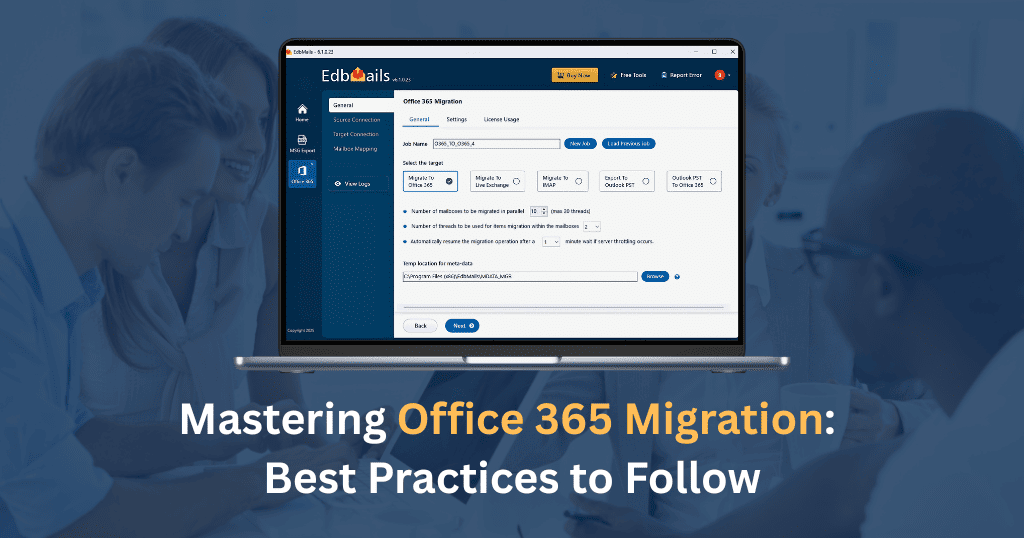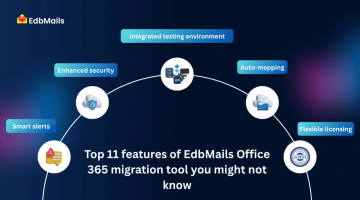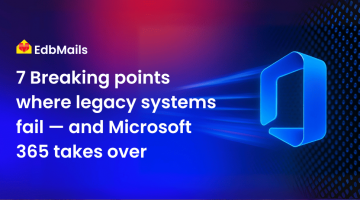Unlike in the past when most organizations were skeptical about adopting the cloud, businesses today increasingly recognize the advantages it offers over on-premises Exchange server setups. This shift has led to a surge in migrations from Exchange deployments to Office 365.

In this blog, we’ll explore some of the best practices you can adopt in your Office 365 migration strategy to ensure a seamless transition.
1. Study licensing options in detail
Licensing might seem trivial at first, but choosing the right option is critical. A license plan that aligns with your organization’s requirements can save significant costs and prevent complications later.
Given the wide variety of licensing choices, it’s best to prepare a list of all user groups and their functions, then estimate what type of license each user requires. Don’t forget to explore discount opportunities when planning your Office 365 migration.
2. Make your choices in advance
One important decision is whether to use impersonation or delegation for mailbox access.
- Delegation: Involves logging into each user account to be migrated with an admin account that has full mailbox permissions. While effective, delegation is impractical for migrations involving a large number of mailboxes.
- Impersonation: Allows administrators to impersonate each user and migrate data without needing individual passwords. This is the preferred method for large-scale migrations.
Planning this in advance ensures efficiency and reduces migration complexity.
3. Define your migration plan
A well-structured migration plan is essential. Without it, things can go wrong quickly. You’ll first need to decide which migration approach best suits your organization: cutover, staged, or hybrid.
Cutover migration
Also known as Express migration, this is the simplest method. It supports Exchange Server 2003, 2007, 2010, and 2013.
- All mailboxes are migrated at once directly from the Exchange Admin Center (EAC).
- Supports up to 2000 mailboxes, but is recommended only for smaller organizations.
- Not ideal for very large or oversized mailboxes, as the migration time can become excessive.
Staged migration
If you need to migrate more than 2000 mailboxes, a staged migration is more suitable.
- Mailboxes are migrated in batches using .csv files.
- Requires Active Directory synchronization between on-premises and Office 365.
- Only user mailboxes and resource mailboxes are migrated. Other objects like contacts or distribution groups are synchronized separately.
- Outlook users must create new Office 365 profiles after migration.
- Works with Exchange 2003 and 2007 (for newer versions, cutover or hybrid is required).
Hybrid migration
A hybrid migration enables coexistence between on-premises Exchange servers and Office 365.
Advantages include:
- Ability to maintain both on-premises and cloud mailboxes.
- Seamless and reliable mail routing between servers.
- Shared domain namespace, GAL (Global Address List), and calendar access.
- Flexibility to move mailboxes back and forth.
- Centralized management through the Exchange Admin Center (EAC).
The Hybrid Configuration Wizard simplifies setting up this environment, making it ideal for organizations seeking gradual cloud adoption.
4. Monitor migration performance
Migration performance depends on several factors, especially if using native methods:
- Load on the source server.
- Available network bandwidth and speed.
- Type and volume of items in each mailbox.
- Office 365 throttling policies, which can slow down the migration process.
These challenges make it crucial to monitor migration throughput and be prepared with contingency plans.
5. Exchange to Office 365 migration with EdbMails
For your next migration project, consider the all-in-one Exchange to Office 365 migration tool from EdbMails.
Key benefits include:
- A cost-effective, direct mailbox migration approach.
- Easy setup with zero downtime, allowing users to continue working during migration.
- Full preservation of mailbox data, including emails, calendars, contacts, and permissions.
- A free demo version (limited to 30 items per folder) to test the tool’s features.
- 24/7 customer support for guidance and troubleshooting.
With EdbMails, you can ensure a smooth, secure, and efficient Exchange to Office 365 migration.
Read more:



